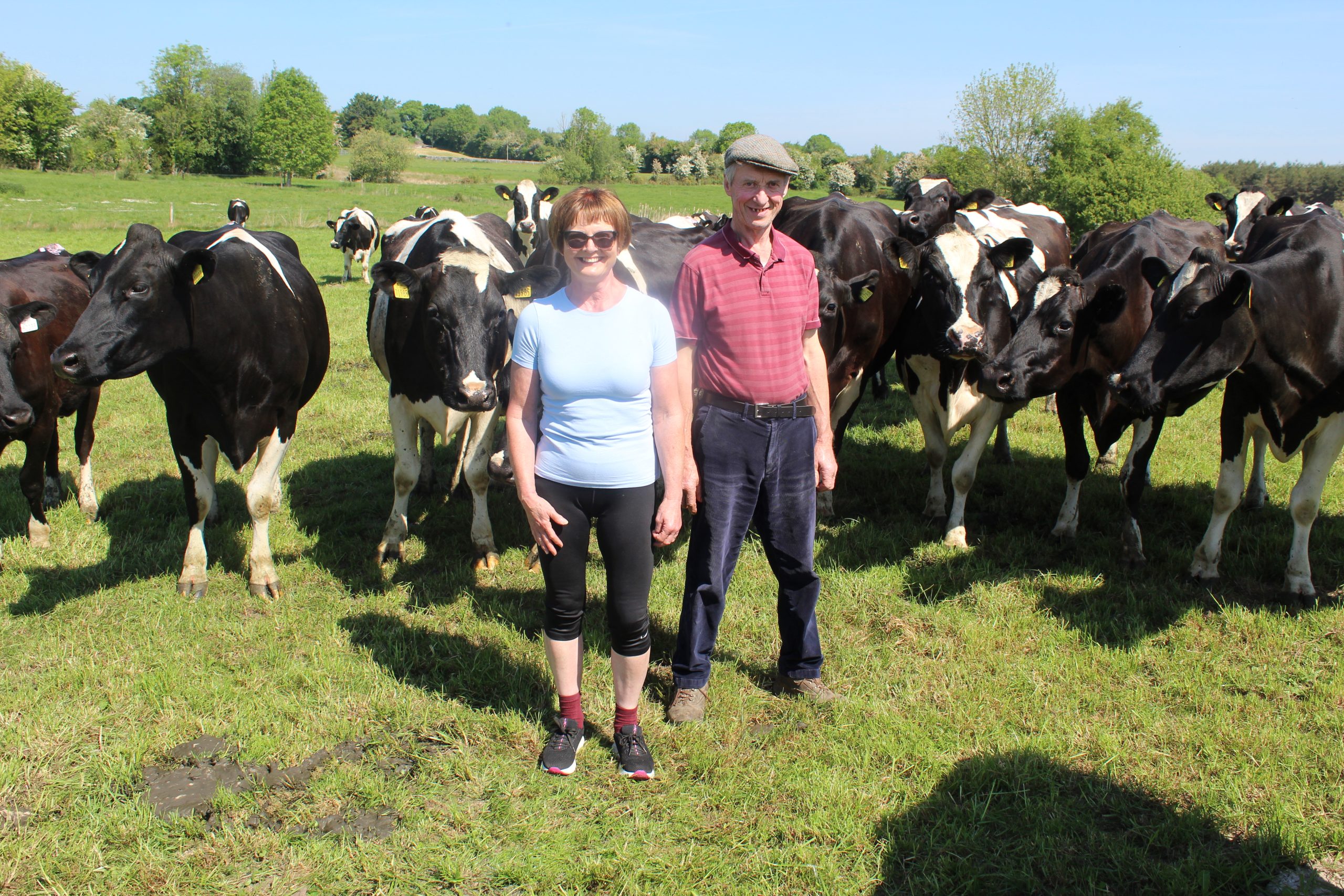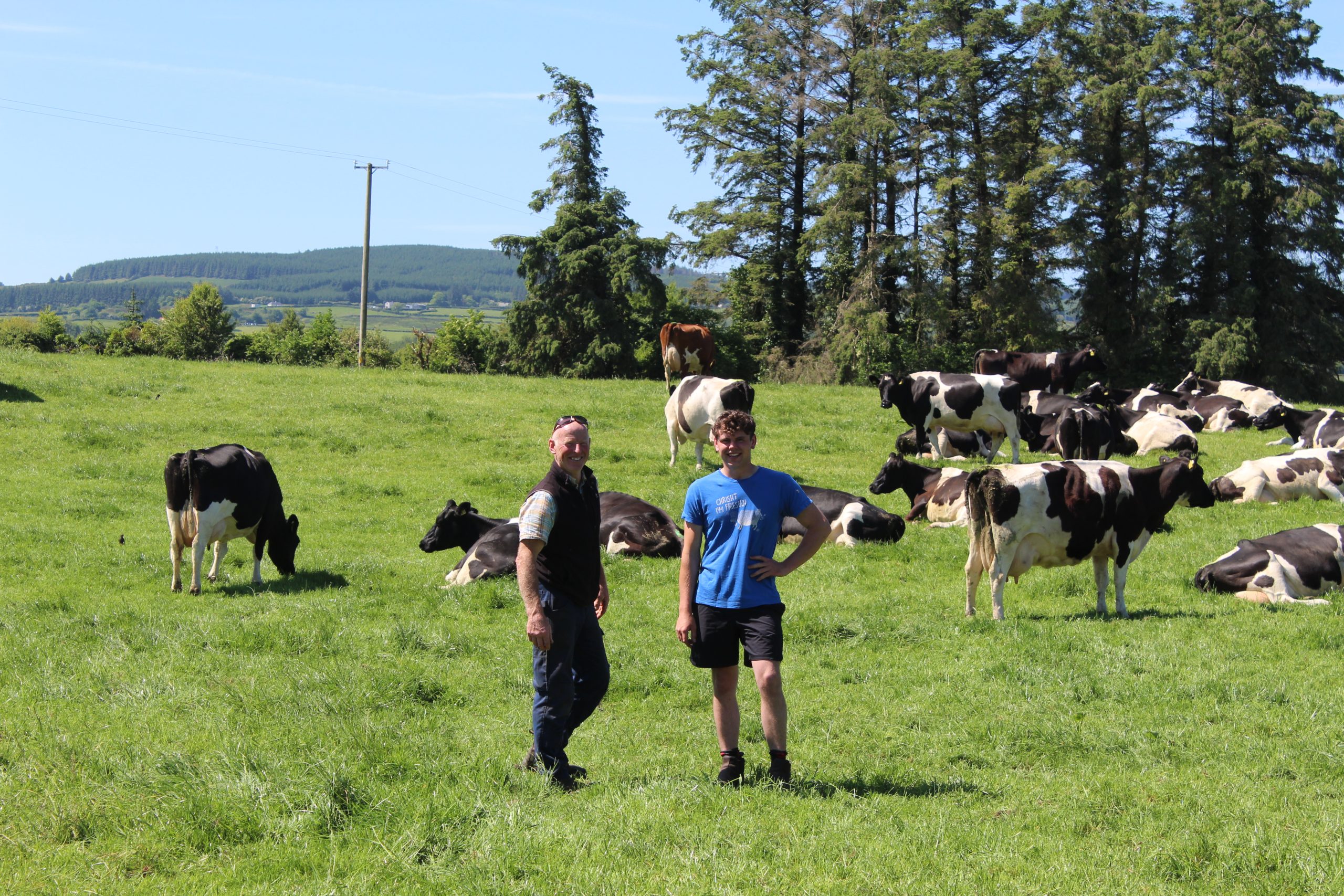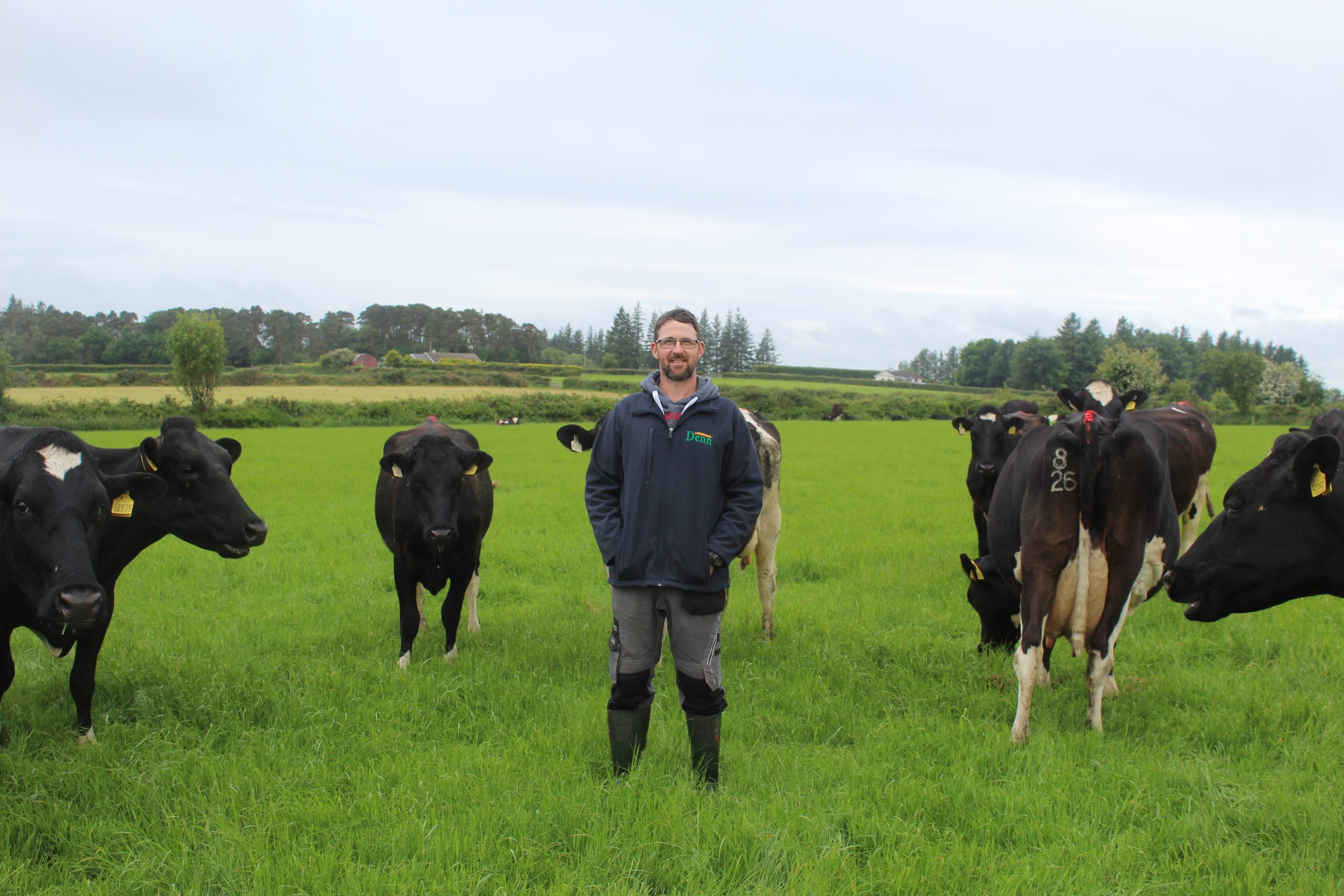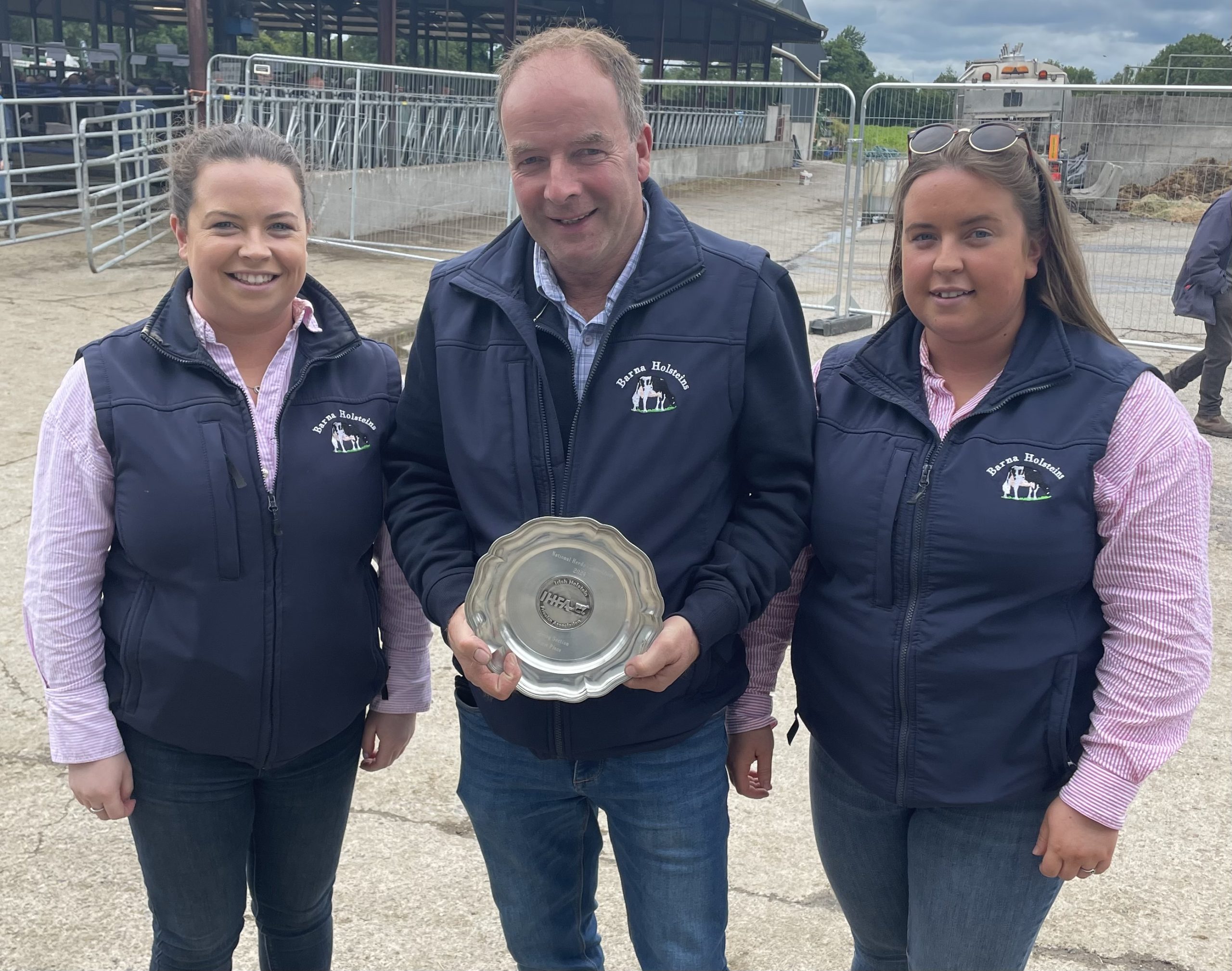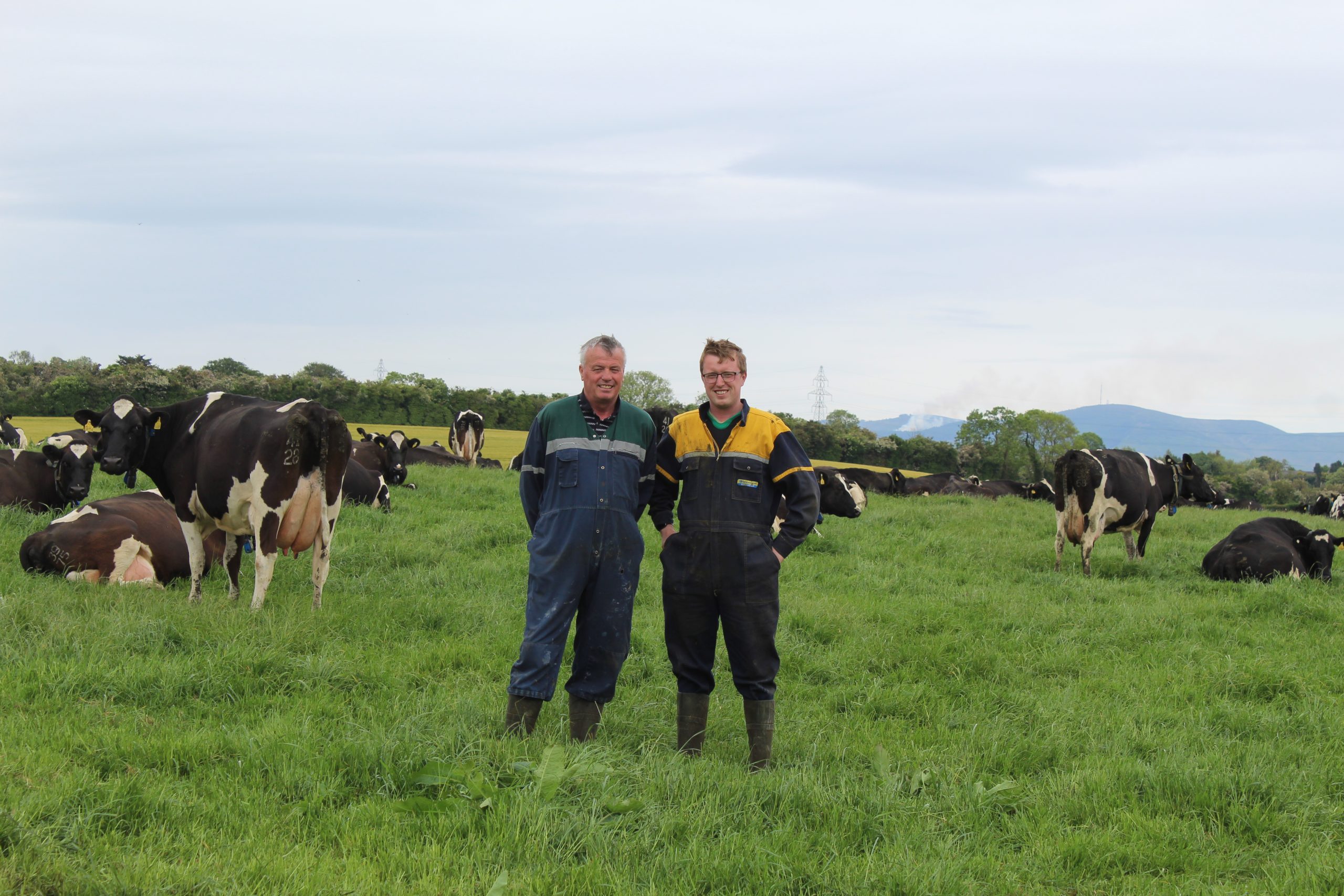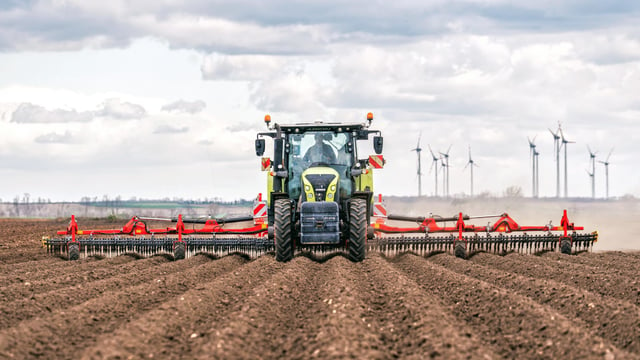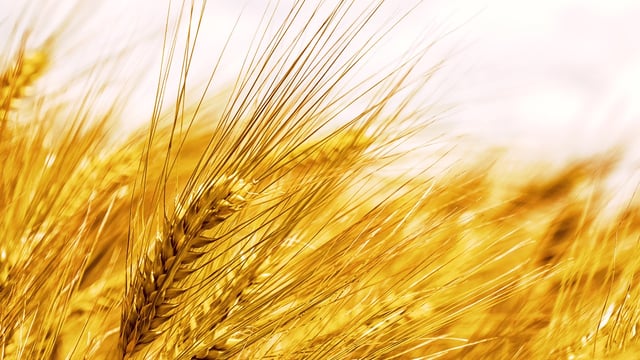Sponsored by IHFA

Sponsored Article
Six Irish dairy farms setting the standard in 2025
Sponsored Article

From across the country, six standout dairy farmers are proving that dedication, innovation, and strong cow families still lie at the heart of modern Irish dairying.
In an era where many challenges are facing the Irish dairy industry, these exemplary herds are showing that success is not one-size-fits-all.
They come from different backgrounds and run very different systems, but they all share a focus on what matters - healthy fertile cows that perform year after year, strong genetics, and a system that works for their individual dairy farm and family.
With their stories evolving from generations of hard work, a deep-rooted passion for cows, and an ability to adapt to the times, these farmers are quietly shaping the future of Irish dairying.
On the Tipperary-Offaly border near Birr, Jim and Brenda Murray, with help from their two daughters when home from Cork, manage the Derrinsallow Herd — a compact, efficient and high-performing system.
On just 66ac of grazing platform, they milk 72 pedigree Holstein cows through a 12-unit herringbone parlour.
The farm has been in the Murray family since the 1950s. Since taking over, second-generation farmer Jim graded the herd up to pedigree status in 2005.
With a sharp focus on EBI, fertility, and milk solids, the herd averages 7,155kg of milk with fat at 4.42% and protein at 3.66%. A somatic cell count (SCC) of just 57 reflects strong herd health and management.
The dairy herd is 100% homebred, featuring elite cow families like the Alices and Agneses — the cornerstones of generations of high-performing daughters.
Jim has bred five AI bulls, including the influential Derrinsallow 812 Arthur (DSU), who has over 3,000 pedigree-registered daughters in Ireland.
Operating a spring-calving system, calving was completed by April 22 this year. AI is used for most of the breeding season, with dairy stock bulls cleaning up the final three weeks. Surplus heifers are sold either privately or through Birr Mart.
Each year, Jim selects a team of eight bulls from Progressive Genetics and Dovea, targeting improvements in solids, herd health and EBI. More recently, he has focused on raising the Milk Sub Index, aiming for €100+ bulls.
With a low-input system — just 1t of concentrates per cow annually — the Murrays show that clever genetics and disciplined grassland management deliver results. Their 362-day calving interval is a reflection of excellent fertility and operational consistency.
This consistency was marked in 2023 and again in 2024 when Jim was recognised as an IHFA Master Breeder.
Farming along the river that gives their herd its name, Henry and Sam Dudley are a dedicated father-and-son team in rural north Co. Tipperary.
With 82 pure Friesian cows on 49 acres, the Dekeana Herd is the result of careful breeding and an unshakable commitment to cow quality.
Henry’s influence is rooted in generations of farming, but it is Sam — currently finishing his Ag Science degree at UCC — who represents the next chapter.
Their herd includes well-known Friesian lines like the Blossoms (from Micheal Spillane, Mountain Herd), the Lils (from Bill O’Connell’s, Rossline herd), and the Savorys (from Bill Trousdell, Ardhu herd), selected for longevity, fertility, and solid production.
Their vision is to ensure a herd where every cow is eligible for classification, and poor performers (feet, fertility, milking speed) are culled without hesitation. The herd is currently producing 7,021kg of milk with 528kgs of solids at 4.01% fat and 3.54% protein.
Breeding is built around sexed semen for first services, followed by targeted beef or conventional artificial insemination (AI) and an Angus stock bull.
This year’s bull team features names like Bradash Patriot Red, Laharn Bruno, and Bradash Trailblazer, all sexed semen.
The herd currently follows a 20% autumn and 80% spring calving pattern, with plans to move fully to spring for better labour efficiency.
They milk in a 12-unit Delaval parlour with individual feeders. Cows are fed 1.1t of concentrate annually via the parlour, plus approximately 60t of a beet-maize blend in spring.
With strong cow families behind them and a shared eye on the future, Henry and Sam Dudley are quietly shaping a Friesian herd built to last.
In Co. Waterford, PJ Brennan farms with his wife Tracey, their children Éile and Seán, with support from his mother Helen and neighbour Seamus — who also helped PJ’s late father John.
The family milk 76 spring-calving cows on a farm he took over in 2011. PJ was inspired by the IHFA stand at the National Ploughing Championships to grade up his herd in 2022, after years of reliable milk recording and data.
The herd Economic Breeding Index (EBI) currently stands at €263, averaging 7,013kgs of milk with remarkable fat and protein percentages (4.63% and 3.80%)
Calving season starts late January, with over 85% calved in the first six weeks.
Milk solids are a top priority — PJ selects AI sires based on a minimum of 33kg combined fat and protein, with close attention to percentages and positive 'Milk €' figures.
His approach blends sexed, conventional, and Angus/Belgian Blue AI, rearing beef calves off-site.
Infrastructure on the farm has transformed under PJ’s leadership. Since 2016, he has added cubicles, a slatted tank, PV panels, and increased feed space — all designed to support a growing, efficient herd.
Milking happens in a 12-unit Fullwood parlour with automatic cluster removers (ACRs), and cows are fed 1.2t of ration annually, along with spring beet.
Keeping fifteen replacement heifers annually and ensuring strong cow families like the prolific Jameys carries the herd forward. The Montaggart herd epitomises efficiency and productivity.
On a 120ac platform in Newtownshandrum, Co. Cork, Michael McNamara, with daughters Rachel and Emma, manages the Barna Herd — a high-output, spring-calving operation supplying Kerry Agribusiness.
From a modest 36 cows in 2004, the herd has grown to over 260 calvings per year, built on deep-rooted cow families and disciplined breeding.
The Jills, Angels, Ingrids, and Cleanas are more than names — they’re the foundation families on which the herd is built.
Breeding strategies focus on fertility, milk solids and production and influential sires like Cogent Twist, Co-op Bosside Massey, Peak Mr Grey, and Westcoast Perseus have helped to shape the herd. As a result, the Barna herd is averaging 7,835kg of milk with 583kg of combined milk solids
Michael runs a tight spring-calving system with a calving interval of only 359 days, relying heavily on sexed semen (100% for heifers, 80% for cows) for the first three weeks.
Conventional AI follows, with beef bulls cleaning up. A feed-to-yield system ensures top cows get what they need in the parlour.
Michael’s attention to detail is evident. In 2019, a cow he had purchased years earlier as a calf from the UK — Woodmarsh Cancun Lyme 2 — won multiple show championships, was Reserve Champion at the National Dairy Show, and named Best Cow in the Limerick-Clare Herds Competition. It was a crowning moment for a herd built on passion and hard work
In 2024, Barna was crowned 1st place in the Elite Spring section of the National Herds Competition, well-deserved recognition for the years of dedication to breeding previous.
In Co. Louth, TJ and Ryan Meegan are running a spring-calving herd that puts it focus on fertility, simplicity and profitability. With 314 cows on 178 acres, and around 100 calves reared annually, the Munta Herd balances size with attention to detail.
After moving to 100% spring calving in 2022 to reduce labour demands and improve fertility, the Meegans now enjoy a streamlined system with a 90% AI’ed within three weeks and an 8% empty rate.
All dairy AI is conventional — no sexed semen — and they have begun retaining six high-EBI bulls each year for maiden heifers.
Genomic testing has shaped breeding for the past three years with the herd EBI now at €241 and the cows averaging 7,317kgs of milk at 4.10% fat and 3.58% protein.
The herd calves from early February through April, milking through a 20-unit swing-over DeLaval parlour and monitored via SenseHub collars. Their diet feeder runs from September to April, reflecting the careful balance of inputs and output.
TJ, who established the Munta prefix, having taken over the farm that was originally purchased in the 1950s, has put a lot of emphasis on genetics, breeding top AI bulls. One such bull, Munta Mystic, now has 1,300+ daughters in over 400 herds — a testament to the genetic strength behind the system.
The Meegan family’s operation is now a template for modern efficiency, with Ryan having joined the operation full time.
The Meegans have managed to scale up without losing sight of the fundamentals: fertility, simplicity, and smart investment in genetics.
Overlooking Ballyheigue Strand in coastal Kerry, Maurice Harty and his family run the Ballylongane Herd, a dairy herd of high-yielding Holsteins established in 1968 by Maurice's father Martin.
Milking 100 cows across a split-calving system, with 170–180 calvings per year, Maurice is supported by his wife Geraldine and their three children, Muiris, Gearoid, and Aisling.
The cows are milked through a 16-unit Dairymaster parlour and diet-fed most of the year — using beet, barley, silage, and straw and a protein balancer.
With 3.5t of concentrate fed per cow, Maurice prioritises output per animal — and it shows in the staggering 10,578kg milk and 811kg solids averages.
Calving is split to allow a brief winter break and better use of labour and facilities. The farm’s ground also grows cereals and beet, with 80% retained for on-farm feed use.
Maurice’s eye for a cow is clear — strong, fertile, high-yielding animals with plenty of protein.
Placing emphasis on positive daughter pregnancy rate (DPR) and linear traits, the herd features standout cow families like the Marys, Marthas, Lulus, Princesses, Peitjes, and Ravens.
Sexed semen is used in two thirds of inseminations, complemented by Angus and Hereford, the herd has benefitted from heavy use of the SSI PR Renegade sire line, including sons Parfect and Trooper, and grandson Cirrus P.
With scenic coastal views and a hardworking herd, Ballylongane shows what is possible when long-standing tradition is matched by modern ambition.
Across every farm, one thing is clear — Irish dairying is in good hands. These farmers are not just chasing numbers; they’re building systems that work for their land, their animals, and their families.
With a strong focus on breeding and genetics, they balance tradition with progress. No matter the size of the herd or the type of system, the goal is the same - to do things well and keep improving.
There will be two Focus Farm Walk events, both taking place in August, with dates and locations to be confirmed.
Please keep your eyes pealed for updates across the IHFA social media platforms, Facebook, Instagram, YouTube, and X.
Sponsored Article



